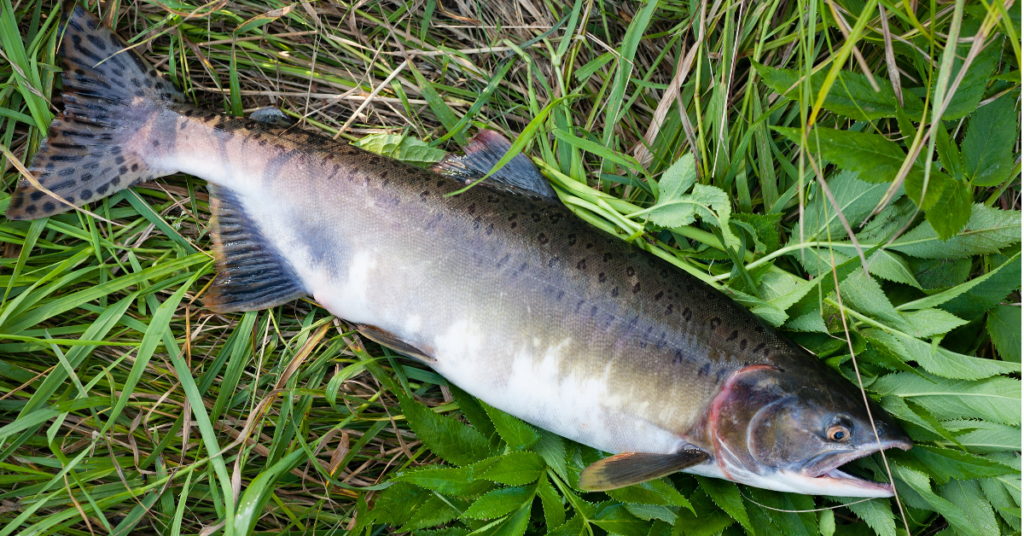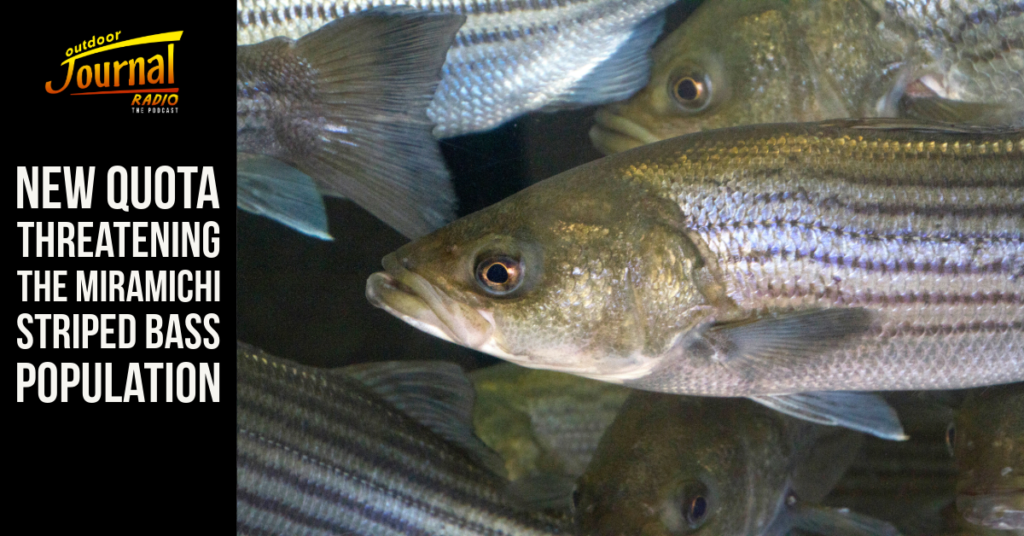Lately, there have been sightings of Pacific pink salmon in the vicinity of White Bay, Newfoundland. These salmon might have covered distances that were previously considered unimaginable to venture into Atlantic waters.
Commonly known as humpback salmon, pink salmon are typically located in the Pacific and Arctic oceans. However, in recent times, they have been observed off the northern coast of Newfoundland. The most notable sighting prior to the current surge of observations occurred in 2017, marking the onset of what Neville Crabbe refers to as a fresh series of sightings.

This pink salmon was caught in White Bay earlier this season, and it’s believed to be the first of its kind caught in Newfoundland this year. The fish is a species of Pacific salmon, and is rarely seen in North Atlantic waters.
“It kind of has that elongated body and silver colours with some spots and other markings, but it is easily identified, upon a little closer inspection, as not an Atlantic salmon,” Crabbe, the executive director of communications with the Atlantic Salmon Federation, told CBC Radio last week.
“To my knowledge, the first pink salmon from this latest wave … was found in the Gander River in 2017. And in that year, there was another pink salmon caught near Cartwright.”
Pink salmon have been identified in rivers within Labrador, Quebec, various regions of Atlantic Canada, and the eastern United States.
While the duration of the presence of pink salmon in provincial waters remains uncertain, endeavors to introduce this species have been undertaken in different global locations.
The initial significant initiative to introduce these fish occurred during the 1960s in Russia, as highlighted by Crabbe.
“They were taken from a large island in the Russian Pacific called Sakhalin Island, and released as fry in some rivers that empty into the White Sea,” he said. “It was attempted first in the ’60s and ’70s, and the fish didn’t take…. It was tried again by the Russians in the ’80s and ’90s, and the fish took. And since then they’ve come up and around Scandinavia.”

This pink salmon is most common in Pacific and Arctic waters.
Nevertheless, Russia was not the sole location engaging in trials of stocking programs — and one of these locations is quite nearby.
According to Crabbe, Fisheries and Oceans Canada also embarked on a stocking program in Placentia Bay from 1959 to 1965.
Even though this effort was ultimately considered unsuccessful, marine biologist Cyr Couturier maintains that it’s feasible the observed salmon originated from Canadian endeavors to introduce pink salmon into provincial waters.
“We did have some success in introducing these in the 1960s to the south coast. In one or two years it did find some spawners, some repeat spawners,” Couturier said.
“We have it here in our waters on the east coast of Canada. It’s also naturalized in the state of Maine, and you know, there are lots of indications that these populations are somewhat self-sustaining.”
Couturier mentioned that additional factors might be responsible for the presence of salmon in Newfoundland and Labrador, such as climate change and the exploration for a new spawning habitat.
Both Crabbe and Couturier emphasize that it’s premature to gauge the potential influence of these salmon on Atlantic salmon populations. Nonetheless, the North Atlantic Salmon Conservation Organization categorizes pink salmon as an invasive species.
Further investigation is required to pinpoint the precise origin of these fish, according to Couturier. However, he holds the view that any effects on the native population would likely be minimal.
“It shouldn’t be a real big threat,” he said.









One Response
That’s interesting, hoping its not invasive. While it would be more interesting if it was naturally coming into the new ecosystem, it could still be more competition for Atlantic salmon, and possibly other species, certainly if the species took off in numbers. If the numbers remain moderate and stable, it should just be a gas to get some of these on the end of your line.
Et Warr,
lover of smoked salmon